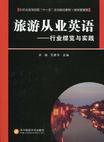旅游从业英语
出版时间:2009-10 出版社:华中科技大学出版社 作者:肖璇,吴建华 主编 页数:291
前言
2008年是“改革开放”30周年,回顾30年来我国旅游高等教育从无到有、从弱到强的发展,其过程是艰辛的,其成就也是巨大的。改革开放以来,我国旅游高等教育基本可以划分为三个阶段:第一阶段是1978年至1988年的10年探索性发展期,这是我国旅游管理专业高等教育发展的起步阶段。国家旅游局是该时期我国旅游高等教育的主要推动力量,在当时联合国内八所高等院校开办了最早的旅游系或者旅游专业。第二阶段是1989年至1995年的7年成长性发展期,这是我国旅游管理专业高等教育发展的培育阶段。该时期旅游高等教育的发展动力主要来自旅游业对人才的需要和高等院校自身发展的要求,不断加速的旅游产业化进程引起了各地政府和高等院校的普遍重视,而旅游管理专业毕业生的“抢手”则进一步增强了高校开办旅游管理专业教育的信心。第三阶段是从1996年至今的规范性发展期,这是我国旅游管理专业高等教育发展的成熟阶段。该时期我国旅游业国内地位的提高和国际影响的扩大,为我国旅游高等教育体系的构建和规范化发展提供了新的机遇和动力,一方面开办旅游专业的高等院校有了较大幅度的增长,另一方面很多院校在课程设置、师资、教材等方面进行了规范化建设。然而,需要我们清醒认识到的是,我国旅游高等教育在快速的发展过程中也存在一定的问题,比如在人才培养目标上定位不清晰、在教学培养模式上理论教育与实践教学脱节等。鉴于此,我们编写了这套实用型的系列教材,并期望在下列几个方面做出一些成绩,为推进我国旅游高等教育的持续健康发展贡献绵薄之力。第一,凸显专业应用特色。旅游管理专业是典型地应用型专业,在教学过程中理所当然地要在各个环节有意识地体现出其应用性的特点,因而在教材建设上也相应地需要在理论阐述的同时丰富其实务内容。为此,我们在为本丛书中的每一部教材精心遴选作者时都尽量吸纳学界和业界的专家共同参与,以使教材既有所需的理论深度,又能反应行业最新动态。在体例和版式设计上,我们也尽可能安排案例解析、补充阅读等。
内容概要
本书有16个单元,内容分为四大模块:模块一介绍旅游的基本概念;模块二简述旅游的影响;模块三介绍旅游资源的定义、规划与开发以及营销;模块四为旅游业内主要细分行业的简介。本书具有较强的专业性,既可作为旅游专业本科高年级学生的教材,也可作为旅游业管理者的参考书籍。
书籍目录
Module Ⅰ:What Is Tourism? 课前导读 Unit One:What Is Tourism?Module Ⅱ:Impacts of Tourism 课前导读 Unit Tw0:The Economic Impacts of Tourism Unit Three:The Environmental Impacts of Tourism Unit Four:The Soci0—Cultural Impacts of TourismModule Ⅲ:Tourism Resources 课前导读 Unit Five:About Tourism Resources Unit Six:Tourism Planning Approaches Unit Seven:Tourism Planning Process Unit Eight:Forms of Tourism Development Unit Nine:Tourism Product Unit Ten:Tourism Marketing(1) Unit Eleven:Tourism Marketing(2)Module Ⅳ:Tourism in Perspective 课前导读 Unit Twelve:Transport Sector Unit Thirteen:The Lodging Industry Unit Fourteen:The Food Services Unit Fifteen:Organizations in the Tourism Distribution Process Unit Sixteen:Attractions,Entertainment,Recreation and Others附录 各单元练习答案后记
章节摘录
插图:Prohibit tourists to cut trees in camping and trekking areas, to collectrare plant and animal species, and to disturb the natural behavioural patternsof wild animals. Hunting and fishing should be allowed only under carefullycontrolled conditions.In marine areas, several types of controls are necessary——operationsrelated to ship bilge cleaning and ballast dumping; use of motorized boats inenvironmentally sensitive areas; collection of live sea shells, coral andendangered sea life; spear fishing; disturbance of nesting turtles; use of boatanchors in coral-bottom bays; and mining of beach sand and coral forconstruction purposes. Boat piers should be properly designed so that they donot lead to erosion or other problems.Maintain environmental health and safety standards for the benefit ofboth tourists and residents.There may be other control measures which should be applied in particulartourism areas depending on their characteristics. With respect to visitor usecontrols, it is important to inform tourists about the controls and why theymust be applied. If tourists understand why the controls are necessary, theywill more likely abide by them.Notes:[11 the physical (natural and man-made) environment[2] Help justify and pay for conservation of important natural areas andwildlife, including marine environments, and development of national andregional parks and reserves, because these are major attractions for tourists.[3] Tourism provides the incentive to clean up environments throughcontrolling air, water, noise and visual pollution, reducing congestion andupgrading overall appearance with suitable landscaping and building design.
编辑推荐
《旅游从业英语:行业综览与实践》:21世纪高等院校“十一五”系列规划教材·旅游管理类。
图书封面
评论、评分、阅读与下载
用户评论 (总计3条)
- 内容难度中等,并且很专业。
- 本来以为要等一个星期,没想到大洋物流这么快就到了,赞一个
- 上课用,没问题
